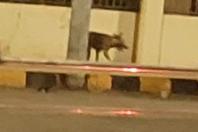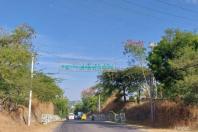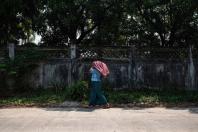
SOLUKHUMBU (The Kathmandu Post) - The wrinkles on his face tell their own stories: of those many years he spent as a young man picking his way through the depths of the mountain he calls his ‘goddess’.
His face cracks open in a wide toothless grin when he talks about his heydays working as a high altitude worker in the Everest region.
A veteran high altitude worker, Aangkami Sherpa, 66, of Khumbu Pasanglhamu Rural Municipality-3, Solukhumbu, has nearly four decades’ experience of working in the world’s tallest mountain.When the mountaineering season begins, Aangkami packs his rucksack and heads towards the Everest Base Camp. He was one of the most experienced icefall doctors working in the region until he decided to retire this year.
“I have worked as an icefall doctor for 21 years. Now I’m old and not as robust and strong as I used to be,” says Aangkami.
Icefall doctors are high altitude workers who make a pathway for mountaineers in the treacherous terrain through the most dangerous portion of the assent, the Khumbu Icefall in case of the Everest. They carve out a path using ropes and ladders to lift mountaineers up and over icy valleys. They are the ones who bring the rocky cliffs of Everest within the reach of climbers who follow their lead.
An icefall doctor’s job is a risky one. Many icefall doctors have perished while undertaking the dangerous job at the Khumbu Icefall.
Aangkami is among the lucky few who have survived time and again, and he thanks his stars and his goddess for this.
Although he has retired as an icefall doctor, Aangkami says his wish is to continue working as a high altitude worker for as long as his body permits.
“I know I won’t be able to stay at home during climbing season. I need to be near the mountains. I will stay at the base camp and help in management. I will teach new icefall doctors some survival skills I’ve learned over the years,” says Aangkami, as his eyes moved towards the mountain from the window of the Everest Pollution Control Office at the Everest Base Camp.
He recollects the time when he started working as a high altitude worker.
“I started back in 1975. My daily wage was Rs 28 back then. It was a risky job but we did it. Some of us for survival and some for the love of the mountains,” he says.
“Many people think that high altitude workers earn lots of money but that’s not true. High altitude workers can earn only during the climbing season which is around three to four months in a year, and they have to make that money last until the next climbing season.”
Aangkami has made way for hundreds to reach the Everest summit, but the veteran mountaineer himself has never stood atop his beloved mountain.
According to him, he has reached up to an altitude of 8,500 metres five times as an icefall doctor to fix ropes and make the trail for climbers.
“You can call it a cruel play of fate, but I have no regrets. I am happy to serve the mountain in anyway I can,” he says.
Aangkami also remembers the changes the Everest has undergone over the decades.
“The snow would be five feet thick in the mountains but now there’s hardly a foot of snow. It could be because of the increasing number of people trying to scale the summit, I’m not sure,” he says.
“We must remember that the mountain is our goddess. The Khumbu glacier has deepened now and it’s getting more dangerous. I think the goddess is angry at us,” says Aangkami, who has been advocating for cleaning up the Everest region and restoring the mountain’s beauty.
http://kathmandupost.ekantipur.com/news/2019-05-27/the-call-of-the-mount...





![[Photo credit: Shwe Yoathlwar charity group]](https://elevenmyanmar.com/sites/news-eleven.com/files/styles/most_read_img/public/news-images/plaza.jpg?itok=v6Gn0YGX)



